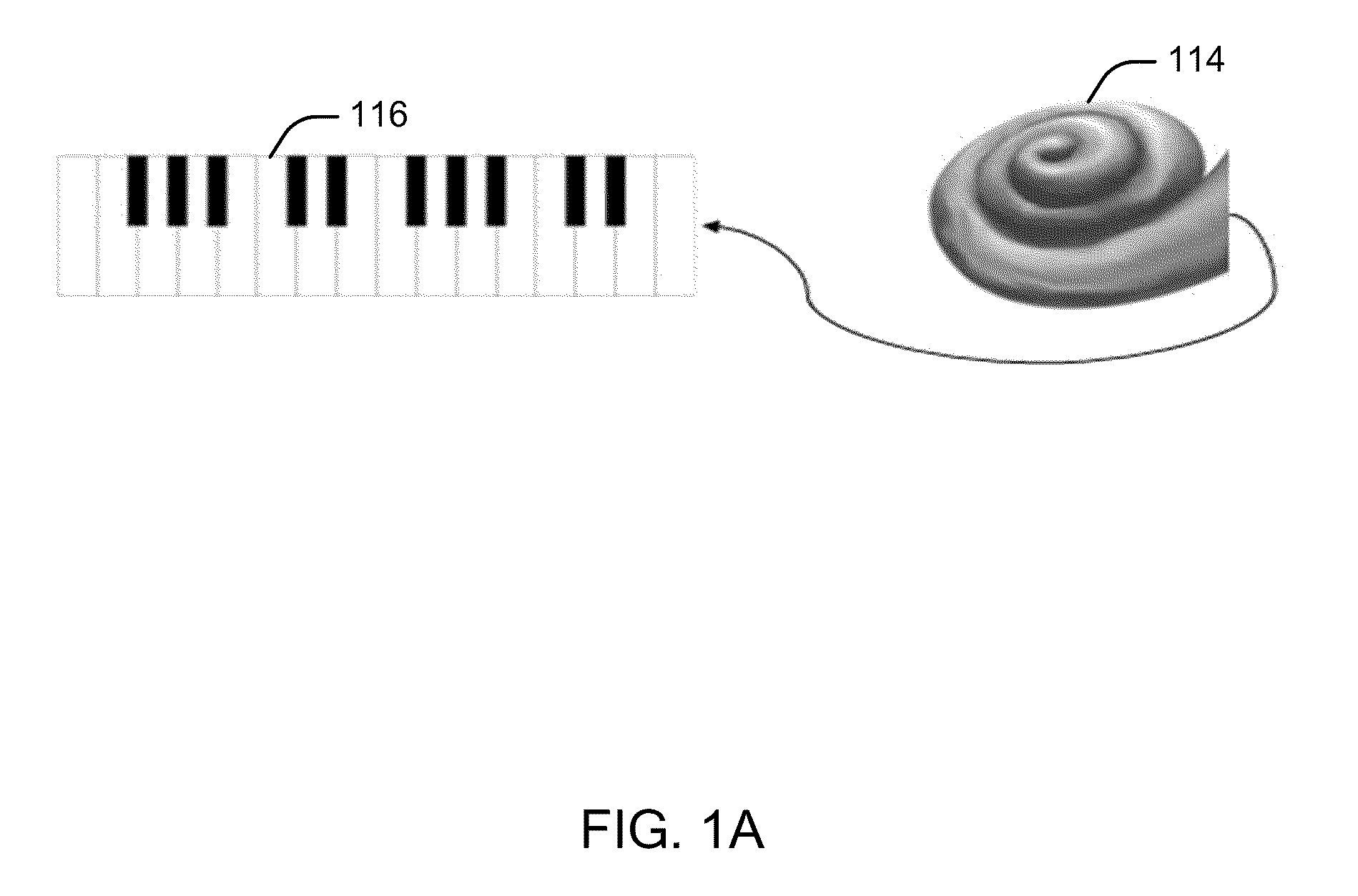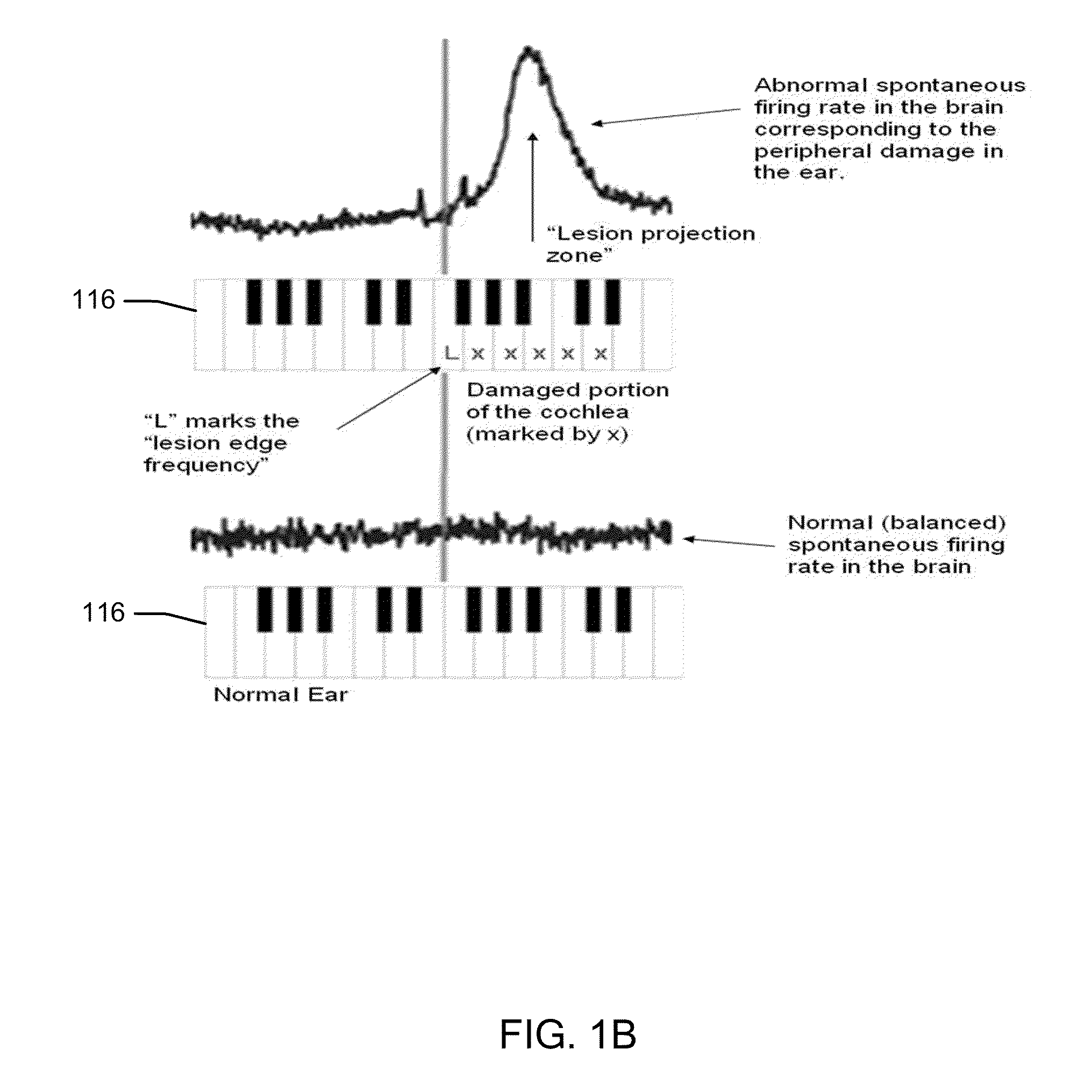Methods and systems for treating tinnitus
- Summary
- Abstract
- Description
- Claims
- Application Information
AI Technical Summary
Benefits of technology
Problems solved by technology
Method used
Image
Examples
Embodiment Construction
In the following detailed description, numerous specific details are set forth to provide a full understanding of the present invention. It will be apparent, however, to one ordinarily skilled in the art that the present invention may be practiced without some of these specific details. In other instances, well-known structures and techniques have not been shown in detail so as not to obscure the present invention.
FIG. 1A illustrates one representative way of describing a cochlea 114 and tinnitus. Clinically, tinnitus is the perception of sound in the absence of auditory stimulation. For example, it is hearing a ringing sound when there is no such sound. A basic discussion on how hearing works may provide an understanding of how tinnitus works. The inner ear has a structure called the cochlea 114 (so called because it looks like a snail shell). Cochlea 114 may be a fluid filled spiral structure. Sound waves may travel through the ear canal and hit the ear drum. From there, three bon...
PUM
 Login to View More
Login to View More Abstract
Description
Claims
Application Information
 Login to View More
Login to View More - R&D
- Intellectual Property
- Life Sciences
- Materials
- Tech Scout
- Unparalleled Data Quality
- Higher Quality Content
- 60% Fewer Hallucinations
Browse by: Latest US Patents, China's latest patents, Technical Efficacy Thesaurus, Application Domain, Technology Topic, Popular Technical Reports.
© 2025 PatSnap. All rights reserved.Legal|Privacy policy|Modern Slavery Act Transparency Statement|Sitemap|About US| Contact US: help@patsnap.com



